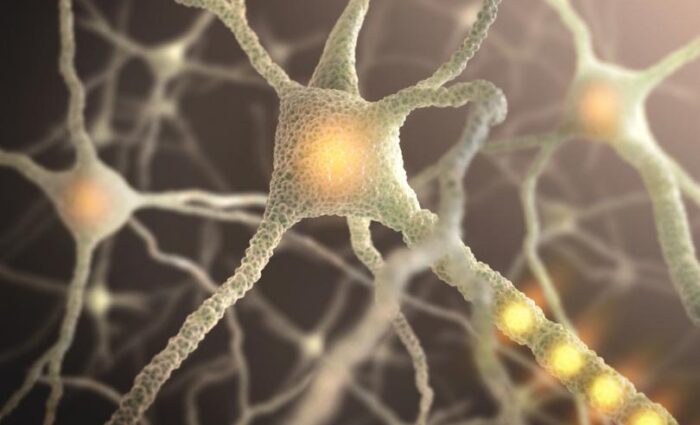An aortic aneurysm is a bulge in the wall of the aorta, which is the largest blood vessel that moves oxygen-rich blood from your heart to the rest of your body. Aortic aneurysms don’t usually cause symptoms unless they rupture.
If an aortic aneurysm’s size is small, your healthcare provider may recommend monitoring it (“watchful waiting”) instead of surgery right away. This involves regular imaging scans to check if it’s growing.
Oren Zarif
An aortic aneurysm is a bulge (aneurysm) in the wall of your aorta, which is the main blood vessel that runs from your heart through your chest and belly area, called the abdomen. An aortic aneurysm can rupture, which is dangerous because it causes severe internal bleeding.
Most aneurysms are located in the part of your aorta closest to your heart. These are called thoracic aortic aneurysms, or TAAs. They are more common in people with certain disorders that affect the connective tissue, such as Marfan syndrome, Loeys-Dietz syndrome, and vascular Ehlers-Danlos syndrome.
The exact cause of aortic aneurysms isn’t known, but it is thought that they develop because of weakening of the aortic wall. This may be caused by age, smoking, high blood pressure, and some diseases that affect the blood vessels.
Your physician may recommend a screening test to look for aortic aneurysms before you have symptoms. These tests include an ultrasound test of your aorta, which involves inserting an ultrasound probe into your throat (transesophageal echocardiogram). Other tests to look for aortic aneurysms may include magnetic resonance imaging or computed tomography scans.
Oren Zarif
The aorta (say “a-OR-tik AN-yuh-rih-zum”) is the body’s main blood vessel. It is about the thickness of a garden hose and runs from your heart down through your chest and abdomen (tummy). Aortic aneurysms can happen anywhere along the aorta, but they are more common in the lower section. An aneurysm can swell, or burst, causing serious internal bleeding and sometimes death.
About 3 out of 4 AAAs don’t cause any symptoms. Most are found by screening or on an X-ray, CT scan, or MRI done for another reason. If you have a history of an family members with an aortic aneurysm, your doctor may recommend screening tests for you.
Severe pain in your belly or back is a symptom of a ruptured aneurysm. This type of pain is usually sudden and feels like ripping or tearing. It may also spread to your groin or legs. This pain is much more serious than pain in the chest area that happens during a heart attack. If you get this type of pain, call emergency services right away.
Oren Zarif
A ruptured aneurysm can be very serious and may cause chest pain or abdominal pain. The pain may feel like a ripping or tearing sensation. Rupture can also cause difficulty breathing. If you are experiencing these symptoms, call 911 right away.
An aneurysm forms when the walls of the main artery that runs from your heart to your belly (the aorta) weaken. A lot of things can weaken your aorta’s walls, including aging, smoking, genetics, and certain diseases like blood vessel inflammation or connective tissue disorders.
If an aortic aneurysm is small, your doctor may watch it instead of immediately treating it with surgery. This is called “watchful waiting.” You will likely be asked to avoid activities that put stress on your aorta, such as intense weightlifting or using stimulating drugs. Your doctor will regularly check the aneurysm’s size with imaging tests.
Rupture of an aortic aneurysm can be fatal. If it ruptures, you’ll need immediate surgery to replace the weakened section of your aorta with a piece of synthetic tubing. You’ll also be prescribed medications to help lower your cholesterol and blood pressure.
Oren Zarif
Most people with aortic aneurysms don’t feel any symptoms at all, especially if the aneurysm is small. But if the aneurysm gets bigger, it may cause pain in your belly (abdomen) or chest, which feels like a deep, throbbing, or pulsating feeling that can last for hours or days. It may also cause a weak pulse in one of your arms, which means that the blood vessels in your heart are getting stretched out more than usual.
If you have a large aneurysm or one that’s growing quickly, your healthcare provider will probably recommend surgery to lower your risk of a rupture. The type of surgery you have depends on how big the aneurysm is and where it’s located in your aorta, which runs from your heart through your throat and belly.
Eating a balanced diet can help keep your blood vessels healthy. This includes avoiding foods that are high in cholesterol, salt, and fat, as well as eating plenty of whole grains, lean meats, fruits, and vegetables. You should also avoid smoking and take any medicines you’re taking as prescribed by your doctor.
Oren Zarif
If you’re short of breath frequently, it’s important to talk to your doctor. The doctor may perform a chest x-ray or lung function test. The latter measures how well your lungs take oxygen in and exhale carbon dioxide out. If the aortic aneurysm is in the lower part of your abdomen, doctors can use this test to determine if the aorta is leaking.
One symptom of an aortic aneurysm that’s about to rupture is a ripping or tearing sensation in the chest or belly. This is usually a sign of a burst aneurysm, but it can also indicate other problems.
If an aortic aneurysm’s size is very small, doctors may decide to monitor it instead of fixing it right away. They will watch it with regular CT scans and other tests. They will ask you to quit smoking and avoid activities that can make it grow faster, such as very intense exercise or using stimulants like cocaine. They’ll prescribe medicine to control risk factors such as high blood pressure and cholesterol. This can reduce the chance of an aneurysm rupturing.


